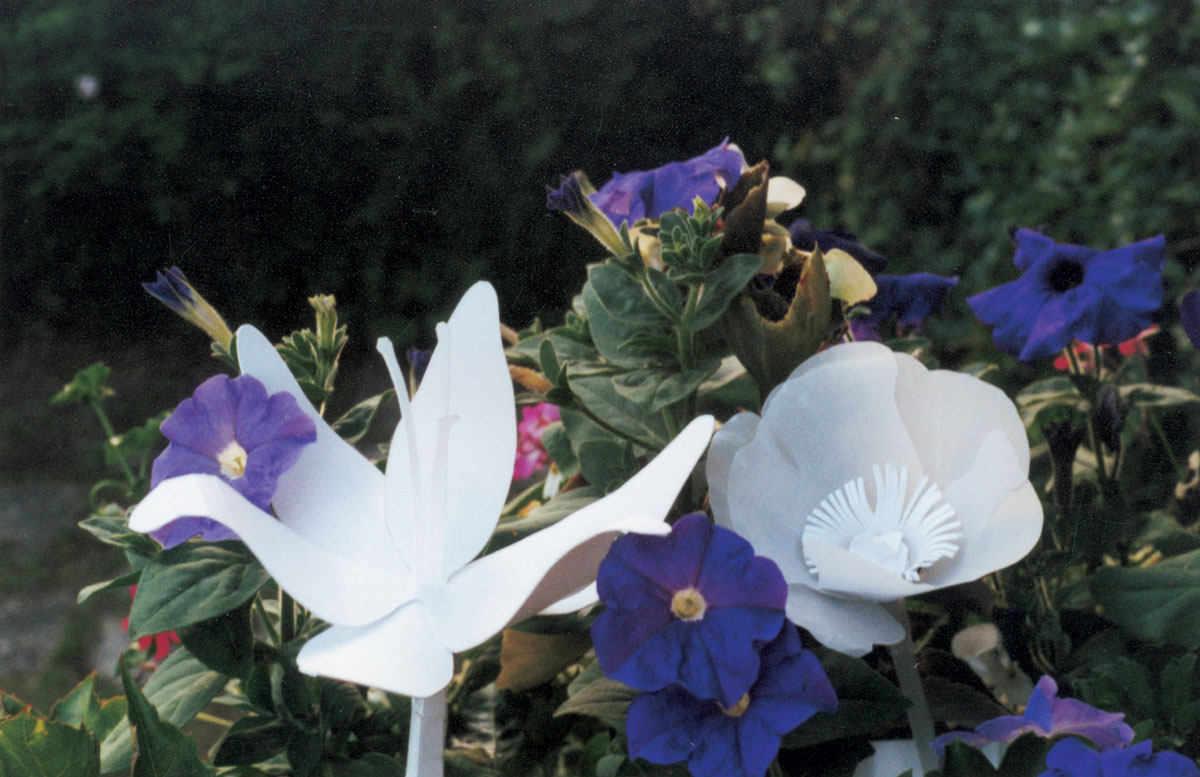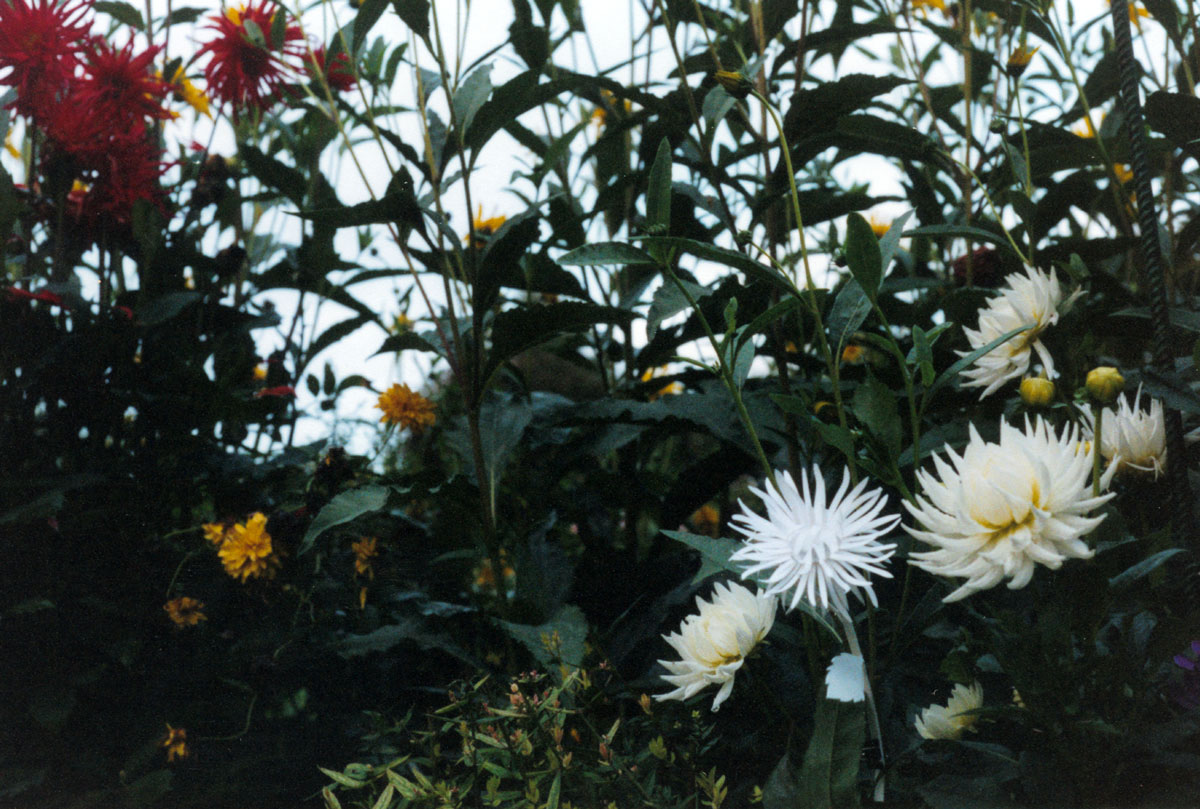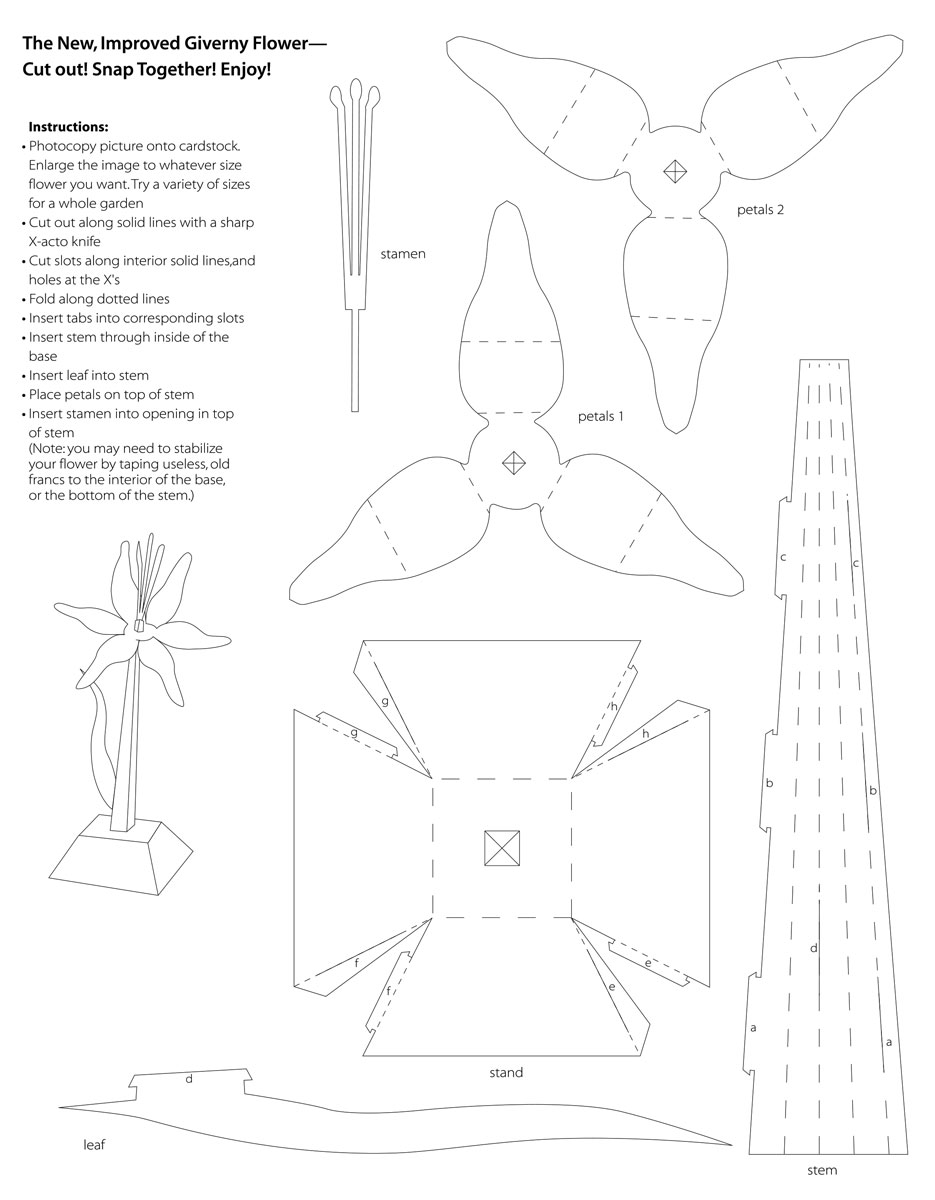Show Me the Monet
Stage-managing Giverny
Rachel Urkowitz
In “The Language of Flowers,” Georges Bataille writes that
... the flower is betrayed by the fragility of its corolla: thus far from answering the demands of human ideas, it is the sign of their failure. In fact, after a very short period of glory the marvelous corolla rots indecently in the sun, thus becoming, for the plant, a garish withering ... flowers wither like old and overly made-up dowagers, and they die ridiculously on stems that seemed to carry them to the clouds ... Don’t all these beautiful things run the risk of being reduced to a strange mise en scène, destined to make sacrilege more impure?[1]
A garden might be just the place to see how Bataille’s analysis of the symbolic meaning given to flowers plays out, a place where a person might test his stated platitude that “love smells like death” by watching a blooming flower fade and die. One famous garden makes this impossible, however, by doing away with anything carrying the slightest whiff of death.
Every year, hordes of tourists visit Claude Monet’s garden in Giverny, France. Monet lived in the house in Giverny from 1883 until his death in 1926. He painted the giant water lily paintings in “the restored Waterlily Studio, now home to the Monet Foundation shop.”[2] Life-sized photographic reproductions of Monet’s paintings decorate the shop, which one must pass through to exit the museum. The gardens themselves are exquisitely beautiful, and, “restored to their original state, [they] now offer the visitor that ‘painting made from Nature itself’ that Monet’s contemporaries regarded as one of his masterpieces.”[3]
As with all successful tourist attractions, the inner workings of Giverny are well hidden from the public. The visitor walks through the lush, color-coded gardens with the sense that this day must be the perfect time to be there, since everything is blooming, nothing is dying and, remarkably, there are not too many bugs, even around the lily pond, where you might expect thousands of mosquitoes. The water lilies, too, seem to be growing just where they were when Monet painted them. As they move from glorious vista to glorious vista, many tourists exclaim, “It looks just like the paintings!”
What is hidden from view is the complex, meticulously planned display, orchestrated by the head gardener, Gilbert Vahé, and the head of the Fondation Claude Monet, Gerald Van Der Kemp. Every two weeks, according to Van Der Kemp, the flowers are “changed.” This means that during the week the gardeners weed out any flowers displaying the least sign of “garish withering” and pile them out of sight of the public. On Monday, when the garden is closed, the gardeners replace all those dead flowers with brand new blossoms, some of which are grown in greenhouses on the property and many of which are purchased from a large, industrial-sized nursery a few towns away. Thus, the whiff of death never approaches the garden path or disturbs the pure enjoyment of the re-creation of an Impression.


The insects are dealt with through liberal spraying of insecticides early in the morning, every week or so. The gardeners wielding the sprayers are fully protected by gas masks, but some unfortunate birds occasionally get caught in the line of fire and drop from the trees. A dead bird can ruin the illusion of constantly budding life, so a few young gardeners patrol the paths during business hours, just to be safe.
The water lilies themselves posed the greatest challenge in terms of the restoration, according to Vahé. In the 1920s, beaver coats were all the rage in France. Beavers were imported to the waters of the Seine to supply an insatiable demand for American Brute Couture. The animals, it turned out, had a taste for water lily roots, and when the fad died out, the unchecked beaver population decimated Monet’s lily pond. Vahé solved the problem of hungry beavers by planting the lilies in cement planters, which also allowed him to place them just so. Thus are the gardens of the past protected, preserved, and saved from the ravages of exposure and small animals, and reduced to a picture perfect mise en scène.

- Georges Bataille, “The Language of Flowers,” in Visions of Excess: Selected Writings 1939–1947 (Minneapolis: University of Minnesota Press, 1985), pp. 12, 14.
- Giverny website: www.fondation-monet.com
- Ibid.
Rachel Urkowitz is an artist who lives in New York City.
Spotted an error? Email us at corrections at cabinetmagazine dot org.
If you’ve enjoyed the free articles that we offer on our site, please consider subscribing to our nonprofit magazine. You get twelve online issues and unlimited access to all our archives.